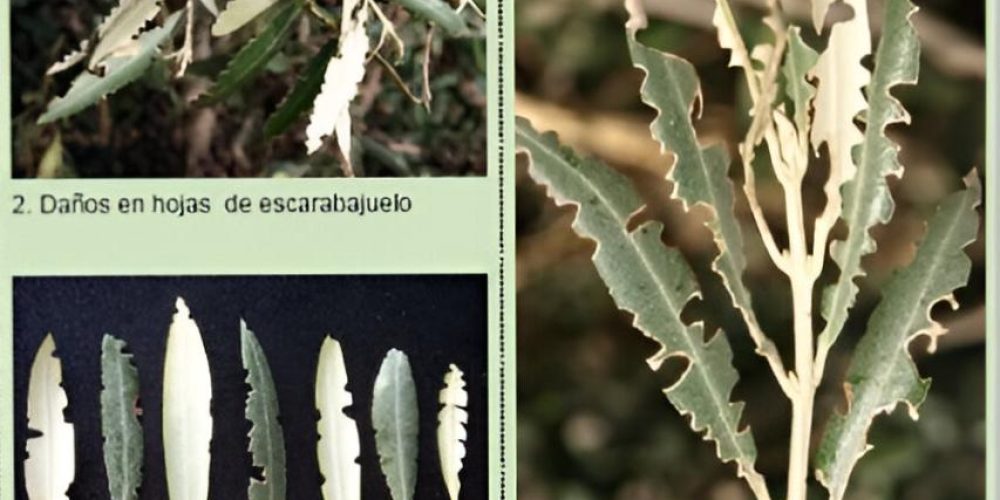Table of contents of the article
ToggleThe olive leaf weevil is one of the pests that affects the quality and productivity of olive trees. In this article on your website, World of Plants, we will learn about how to prevent and control.
Symptoms of olive leaf weevil
- Scientific name : otiorrhynchus cribricollis
- the family : coleoptera
- Adults feed on tender leaves, although they can also cut off shoots and damage the buds (regularly pinching the edges of the leaves).
- Egg: The color is initially white, its shape is oval, and its size is 0.8 x 1 mm. The color turns black before hatching.
- Caterpillar: white in color and curved in shape.
- Description of the adult insect: Females are brown in color and measure 7-8 mm in size. They have no wings, and their ability to spread is rare. They are active at night and when they are discovered they usually kill themselves. No males found
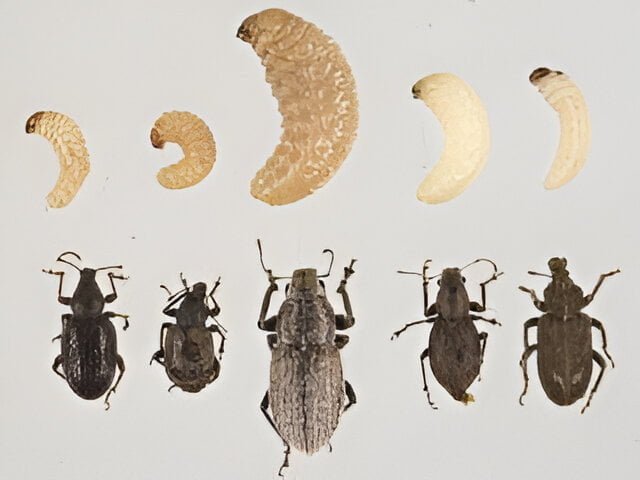
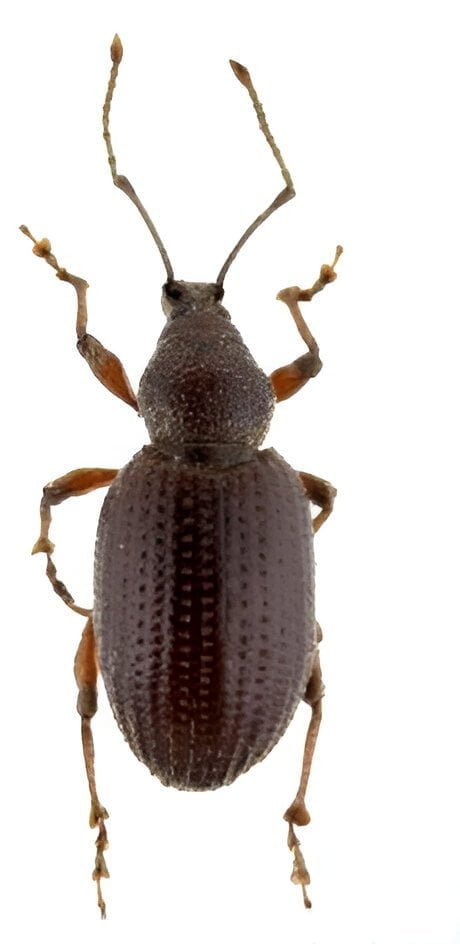
Causes of olive leaf weevil
- Climatic conditions
- Abundant irrigation and not draining excess water.
Suitable conditions for the spread of the olive leaf weevil
- It needs moist soil.
- High air humidity and low temperatures.
Development cycle of the olive leaf weevil
- The incubation period of the egg is between 14 and 14 years. 37 days.
- The normal duration of larval life is from May to October or a period of about 5 months.
- About 10 percent. The larvae bloom during one summer. The larvae are about 17 months old
- The normal life of an adult insect lasts from November to April, that is, about 5 months, but some of them (about 11 percent) enter hibernation during one winter, and thus live 17 months. Adult insects feed in two seasonal periods separated by an interval of about 6 weeks. During this period it is inactive
- Most eggs are laid in the fall, but a few are laid in the spring.
- The eggs are laid less than 6 cm underground and less than 25 cm near the trunk of the olive tree. After birth, the larvae of Otiorhynchus cribricollis feed on the roots of olives and various herbaceous plants, which are usually found no higher than 25 cm from the ground.
- The adult insect leaves mainly during May and June. At this stage, the olive beetle takes advantage of the night to feed
- During the day, the Otiorrinco takes refuge under stones, bark or cracks near the trunk of the olive tree.
- As temperatures rise at the end of June and July, adults seek greater depth.
- In August, the temperature drops and the humidity rises, allowing the olive beetle to leave its shelter again to feed.
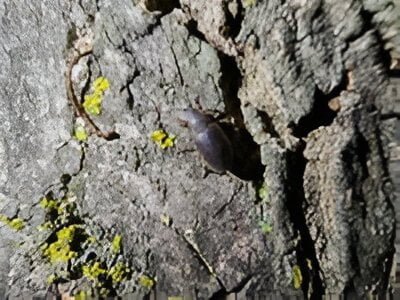
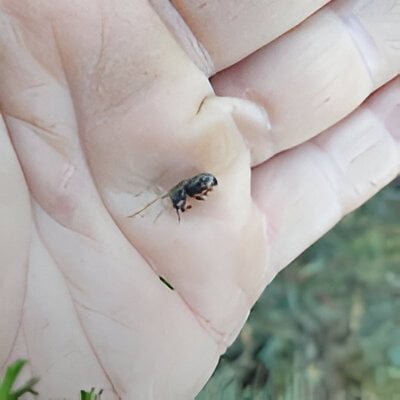
Losses from the spread of the olive leaf weevil
In severe infections, the entire leaf is exposed except for the main vein.
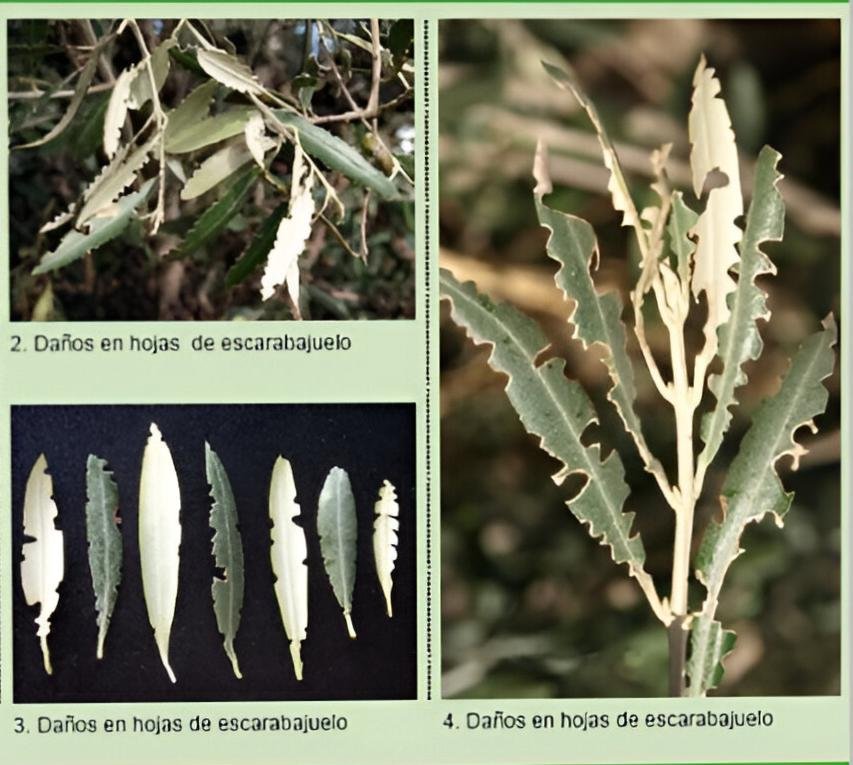
Olive leaf weevil control strategy
Preventive measures to prevent the occurrence of olive leaf weevil
- Trim the lower limbs to ensure they do not touch the soil, and to prevent weevils from climbing into the trees.
- Get rid of pruning residue by burning.
- Weed removal.
Chemical and organic control recommendations against the olive leaf weevil
- Being naturally resistant to many insecticides and able to quickly develop resistance to others, their long-term presence in the crop requires frequent use of various products.
- Adults cannot fly and spend the day in the soil, so eliminating the espalieres that provide a path from the soil to the fruit may help.
- Some success has been achieved with carbofuran on newly hatched larvae, as well as with granulated benfuracarb (5% p) at 10-12 Hg/ha incorporated at sowing or before transplanting.
- We can use brick traps that are placed near the trunk and above the ground. Adult insects prefer to take shelter under it during the day
In conclusion, we would like to note that we, at the world of plants website, offer you all the necessary services in the world of plants, we provide all farmers and those interested in plants with three main services::-
- Artificial intelligence consulting service to help you identify diseases that affect plants and how to deal with them.
- Blog about plants, plant diseases and care of various crops ... You are currently browsing one of her articles right now.
- An application that provides agricultural consultations to clients, as well as a service for imaging diseases and knowing their treatment for free – Click to download the Android version from Google Play Store، Click to download the IOS version from the Apple App Store.
References:
- Andrewartha, H.G. “The bionomics of Otiorrhynchus cribricollis, Gyll.” Bulletin of Entomological Research 24.3 (1933): 373-384.
- YATES, Louise; SPAFFORD, Helen; LEARMONTH, Stewart. Apple weevil (Otiorhynchus cribricollis) management and monitoring in Pink Lady™ apple orchards of south-west Australia. Plant Protection Quarterly, 2007, 22.4: 155
- The Bionomics of Otiorrhynchus cribricollis, Gyll – cambridge
- Otiorhynchus cribricollis – excelentesprecios
- Identifying soil beetle pests – Government of Western Australia




